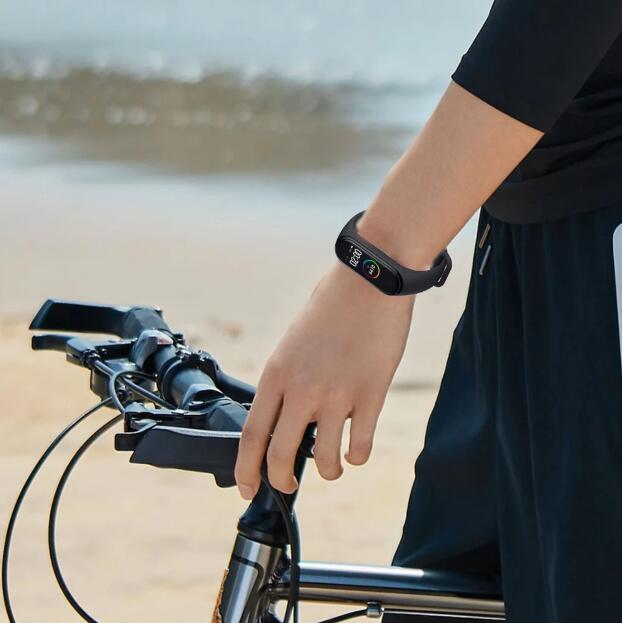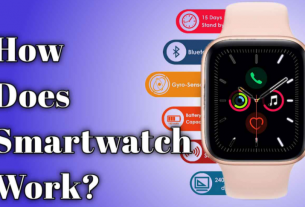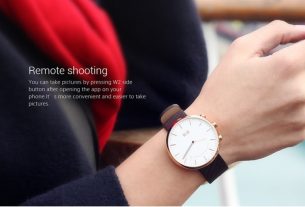If you’re in the market for fitness trackers, you’re most likely looking to change your health behavior-whether you remember to walk more, track your exercise frequency, or make sure you work hard at the right time to exercise what you do. The wearable device market is saturated with various options, but you can’t find a more affordable product than Xiaomi’s latest Mi Band 4. It has half the price of Fitbit and Garmin.
Mi Band 4 has a lot to watch. For just $ 40, you get a water-resistant fitness tracker, heart rate monitor, exercise tracking, text and call notifications, sleep tracking and an impressive three weeks of battery life, depending on the use. Compared to the monochrome Mi Band 3, the version 4 has a 0.95-inch full-color OLED touchscreen with a peak brightness of 400 nits. The screen is colorful, vivid, and responsive to swipe up and down, browse music controls, alarm clocks, exercise tracking modes or set menu options. The raise of the wake screen option is not always successful, but I do like that it allows you to turn on this feature only during certain times of the day, so it doesn’t turn on suddenly when you toss and turn in bed.
One of the best features of the Mi Band 4 so far is its battery life. I took the band for two weeks and only needed to recharge on the 13th day. (By then, it’s only 15%, and it might last another night.) Of these 13 days, I used it to track 10 days and 35 minutes of training. Compared to the chest heart rate monitor I wear while exercising on my Peloton bike, the output numbers haven’t changed much. Heart rate numbers are almost the same, and calorie burn calculations disappear in indistinguishable amounts.
However, for the Mi Band 4 to track your training, you must manually click on it before it can begin; the band does not automatically detect sudden spikes in heart rate as a potential start for a workout. You also have to stop it manually after you’re done, and if you’re like me, you can go directly into the shower after you’ve done your exercise, which can be annoying.
Through Huami (the parent company of Xiaomi Wearables / Mi Fit) privacy policy, the company very clearly collects anonymous information such as your gender, age and location for ad targeting with third parties. This is not uncommon for today’s Internet companies. It also uses cookies and pixel tags to track the websites you visit or the ads you click on, and your information may be shared with “business partners and affiliates” for “internal business purposes”. If the company has been sold or merged, your information may be part of the transaction.
Basically, devices and applications act as auxiliary ad players, which is not surprising for affordable devices. (Competitors like Fitbit do the same.)
But it’s worth noting that your data may be “stored anywhere” in the world, and its current data facilities are located in China, Singapore, Germany, Russia, and the United States. If you find that you have violated their user agreement, you must resolve your dispute in a Chinese court. Since the Mi Fit app needs to set up the Mi Band, this issue can’t actually be resolved, but Huami does allow you to revoke data usage at privacy@huami.com. If all of this is relevant to you, set a reminder to request regular data deletion.
Although Mi Band 4 provides sleep tracking capabilities, I have found that these estimates are not always accurate. Most of the time, I wake up, get up in the morning, read a book in bed, and Mi Band won’t recognize me as “awake” until I get up and walk to the bathroom. (Fitbit Inspire HR, the last fitness tracker I tested, no problem determining this behavior in bed.) Another day, when I went home and passed out on the sofa at 9:45 pm (please do n’t (Judgement) Wake up briefly around 1am. The Mi Band 4 didn’t notice this movement and concluded that I slept for 10 hours and 51 minutes that night.
I can tell you that Mi Band 4 is a very sophisticated fitness tracker. It’s cheap, easy to wear, fairly discreet and lightweight, and it can complete most $ 100 fitness trackers for less than half the cost. My problem with Mi Band 4, and what I want to discuss in the second half of this review, is why some messages in the device and Mi Fit app are a bit missing in translation. It makes me very frustrated because I find it too annoying to recommend it, especially if you are a beginner who is looking for a cheap way to start changing your lifestyle.
Let’s face it: changing habits is difficult. Cognitive scientists will tell you that positive language is the key to rebuilding your brain to encourage better behavior, and this is where Mi Band 4 completely fails.
For example, I analyzed the sleep on the first night of Mi Band 4. Although I slept for 8 hours, I woke up and found some strange wording and fear tips, such as going to bed after 11pm will accelerate aging and damage my immune system (considering that I already have a normal human immune system (Half, so it’s not particularly fun to read). It also implies vaguely that I can improve my deep sleep time by “don’t strain myself”, “schedule work” and maintain “good mood”. Well, what? This is “helpful” because your partner says that the food you cook can be improved by “making it more delicious”.
Mi Band also sends notifications reminding you to continue moving, just like most wearables, but its version message has a rather offensive tone. After working at my desk for an hour, the band buzzed and told me, “You’ve been sitting for too long.” Again, I’m not a psychologist, but I shouldn’t encourage continuous behavior change, positive Prospects? Perhaps for everyone. Maybe you are the kind of person who likes this stern attitude more, but I think this gadget is more motivated than me.
This gadget bothers me more than my motivation
Avid exercisers will also tell you that muscles weigh more than fat, but the Mi Fit app seems to focus primarily on weight loss, as female icons are reduced in the overview of my weekly steps. (This icon is used whether you identify yourself as male or female.) Diet and weight loss have historically been feminized, as written by Jaya Saxena of Eater when it comes to product information that is usually obese . All Mi Band 4 languages feel vanity.
For the most part, I think this cultural mismatch is due to Mi Band 4 and Mi Fit serving the company’s home market in Asia first because it has a different ideology in terms of health and happiness. But if Xiaomi wants its band to be more effective outside Asia, it may consider updating its software to suit other markets.
The easiest way to get around this mess is to pair your Mi Band with Google Fit, but it requires a Mi Fit app to do so, which adds digital to your phone. Ironically, Mi Fit promotes a lean and gentle lifestyle. Even if you haven’t skipped the fitness tracking feature in the Mi Fit app, it’s still worth taking the time to talk about the news, because part of pursuing a healthier lifestyle is mental. If Xiaomi wants to use its products all the time, the language should encourage it rather than drive users.
All in all, Mi Band 4 is a rugged device. You really get the cost of many other fitness trackers, and most of my complaints about the device can be resolved by pushing software updates. If you’re looking for a cheap, basic wearable, you might be worse than the $ 40 Mi Band. After all, it’s a fitness tracker and that’s it: it tracks. Just don’t ask the app for any help on how to improve your actual health habits.



